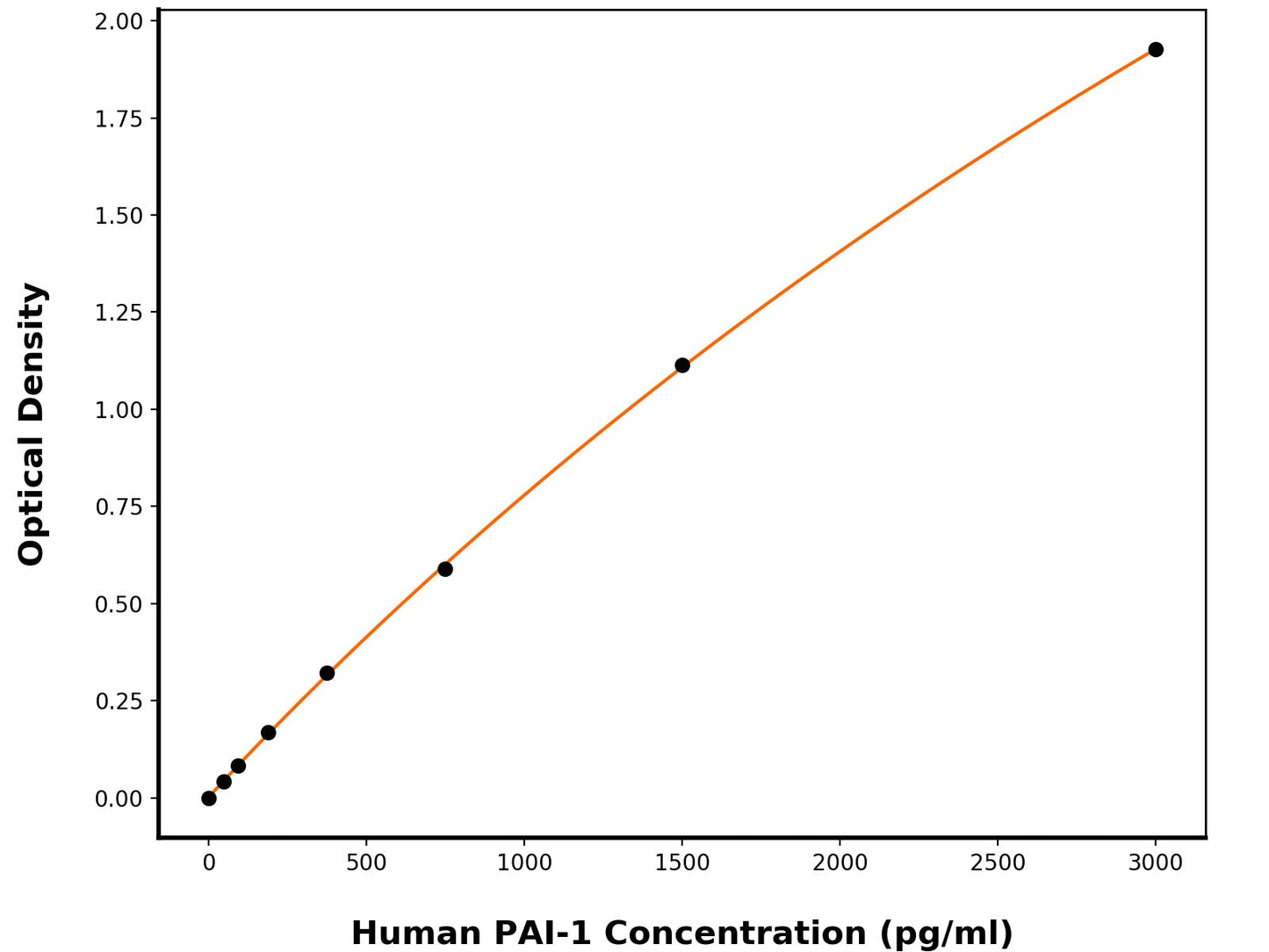1
/
of
1
Human Plasminogen Activator Inhibitor 1 (SERPINE1) ELISA Kit
Human Plasminogen Activator Inhibitor 1 (SERPINE1) ELISA Kit
This ELISA kit is designed to detect Human Plasminogen Activator Inhibitor 1 (Human SERPINE1). The assay plate has been pre-coated with mouse anti-Human PAI-1 monoclonal antibody. When the sample containing PAI-1 is added to the plate, it binds to the antibodies coated on the wells. Then, a horseradish peroxidase conjugated mouse anti-Human PAI-1 Antibody is added to the wells and binds to PAI-1 in the sample. After washing the wells, substrate solutions are added, and the color intensity is directly proportional to the amount of Human PAI-1 present. The reaction is stopped by adding an acidic stop solution, and the absorbance is measured at 450 nm.
Catalog No:
BPE061
Regular price
$624.00 USD
Regular price
$480.00 USD
Sale price
$624.00 USD
Unit price
/
per
2 weeks
Couldn't load pickup availability
Product Details
Species Reactivity
Human
Sensitivity
13.06 pg/mL
Detection Range
46.88-3000 pg/mL
Sample Type
Serum, plasma, cell culture supernates
Incubation(s)
3.5 hour(s)
Research Areas
Cancer, Cardiovascular, Cell Biology, Metabolism
Background
Plasminogen activator inhibitor 1, also known as PAI-1, Endothelial plasminogen activator inhibitor, SerpinE1 and PLANH1, is a secreted glycoprotein that belongs to the serpin family. SerpinE1 is the primary physiological inhibitor of the two plasminogen activators urokinase (uPA) and tissue plasminogen activator (tPA). Its rapid interaction with TPA may function as a major control point in the regulation of fibrinolysis. Defects in SerpinE1 are the cause of plasminogen activator inhibitor-1 deficiency (PAI-1 deficiency) which is characterized by abnormal bleeding due to SerpinE1 defect in the plasma. High concentrations of SerpinE1 have been associated with thrombophilia which is an autosomal dominant disorder in which affected individuals are prone to develop serious spontaneous thrombosis. Studies of PAI-1 have contributed significantly to the elucidation of the protease inhibitory mechanism of serpins, which is based on a metastable native state becoming stabilised by insertion of the RCL into the central beta-sheet A and formation of covalent complexes with target proteases. Greater expression of PAI-1 has been associated with increased survival of cells and resistance to apoptosis. PAI-1 appears to influence apoptosis by decreasing cell adhesion (anoikis) as well as its effect on intracellular signaling. PAI-1, in its active state, also binds to the extracellular protein vitronectin. When in complex with its target proteases, it binds with high affinity to endocytosis receptors of the low density receptor family. The mechanisms of PAI-1 overexpression during obesity are complex, and it is conceivable that several inducers are involved at the same time at several sites of synthesis. PAI-1 is also implicated in adipose tissue development. It suggests that PAI-1 inhibitors serve in the control of atherothrombosis.
Shipping Condition
Shipped on cold gel packs.
Storage Condition and Shelf Life
This product can be stored at 2-8C.
Analyte
Plasminogen activator inhibitor 1
Regulatory Status
For Research Use Only

